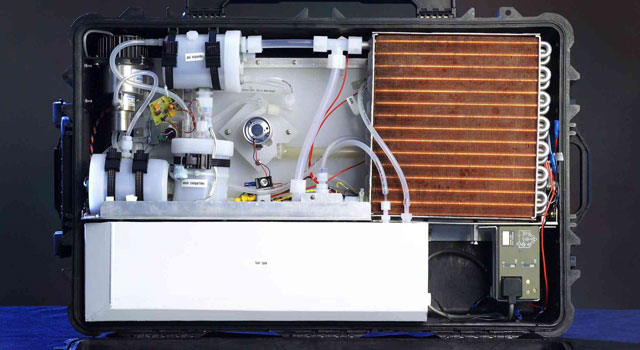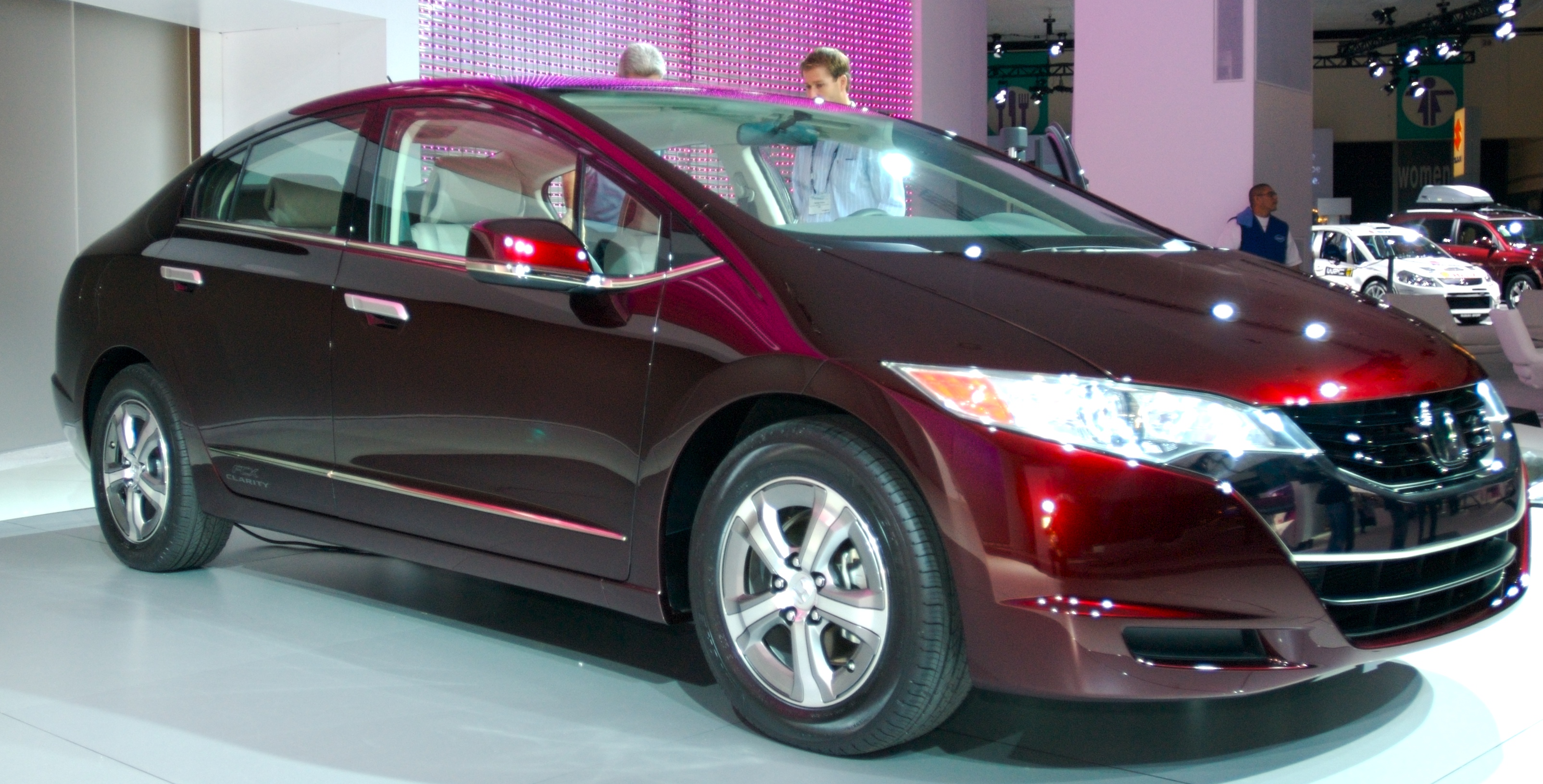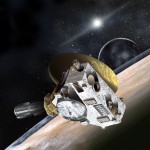When it comes to exploring strange new worlds, NASA’s ATHLETE (All-Terrain Hex-Legged Extra-Terrestrial Explorer) is one tricked-out rover. The robotic vehicle (pictured) has six wheels attached to six spider-like legs that move independently to traverse the bumpy surfaces of Mars, the Moon, asteroids and beyond. The whole setup acts as a giant platform for whatever gizmos and sensors need hauling around on foreign worlds. There has even been talk of adding a Batman-style grappling hook to get up steep cliffs!
But ATHLETE needs power to keep its motors humming, and a battery just won’t cut it. Thomas Valdez, a researcher at NASA’s Jet Propulsion Laboratory, discussed his team’s work developing a new type of portable power called a regenerative fuel cell on Thursday. Valdez’s talk from Pasadena, Calif., was beamed out to the world via webcast Thursday night as part of the von Kármán Lecture Series.
“Lots of times when we talk about regenerative fuel cell systems, people don’t understand that it’s very much like a battery,” said Valdez, who runs the fuel cells group at JPL. “But the difference is the system we’re using to store energy is water.”
A basic fuel sell system starts with plain water (which, for those of you a bit rusty on your high school chemistry, is two hydrogen atoms bonded with an oxygen atom). Using an electrical current, such as from a solar panel, the water molecules can be broken up into oxygen gas and hydrogen gas. These two gasses are stored separately until power is needed—the larger the reserve tanks holding the gasses, the more power available later. Upping the pressure in the tanks compresses the gas down into a smaller volume, meaning more power potential in less space.

A fuel cell that uses methanol instead of water. While this fuel cell works on a similar concept, the cycle doesn’t loop as easily since the end product (in this case CO2 and water) isn’t the same as the initial substance. Credit: JPL/NASA
When power is needed, the oxygen gas is placed on one end of the fuel cell (the cathode side) and the hydrogen gas on the other (the anode side); an electrolyte barrier separates the two sides. Neutral hydrogen atoms are made up of one proton and one electron. At a place called the proton exchange membrane, the proton of a hydrogen atom passes through to the other side of the fuel cell but the electron is forced into an electrical circuit. The electrons in the circuit flow out of the fuel cell to provide power to something (such as a motor) before rejoining their proton and oxygen atom companions on the other side.
When the protons, electrons and oxygen meet back up, they recombine back into regular water. This water end product can be split again into oxygen and hydrogen gas, starting the whole cycle over again. Since water is plentiful and safe to transport, hydrogen fuel cells like the ones being developed at JPL have big benefits for manned and unmanned space travel.
“Regenerative fuel cells provide a pathway for energy storage systems that are game changing for NASA,” Valdez said.
The big benefit of fuel cells is the amount of energy they can store. A typical battery can store at most 24 hours’ worth of energy for a vehicle like the ATHLETE. This is fine for a place like Earth where the Sun shines in 24-hour cycles, but on the Moon where a day lasts 29 Earth days, getting energy to recharge a battery possess a problem. Fuel cells have a higher energy density than traditional batteries.
The problem with fuel cells is that they aren’t as efficient as traditional batteries. That is, you’ll only get about 65 percent of the energy you store in a hydrogen fuel cell back in a usable format. Making these fuel cells more efficient is a big goal Valdez’s team has.
“We’re starting to creep up closer to the battery systems,” said Valdez. “Eventually batteries won’t have any advantage over fuel cells.”
Similar hydrogen fuel cells have already been put in place for cars, at least experimentally. In California, 22 hydrogen fueling stations fill up the 300 fuel cell vehicles on the road in the state. The fueling stations take water and

The Honda FCX Clarity, a hydrogen fuel cell car. Estimates place the current price of building one of these models at around $140,000. Credit: Bbqjunkie at Wikipedia.org
split it into hydrogen gas and oxygen using solar panels. The hydrogen gas is then pumped into the fuel cell vehicle like gasoline for a traditional car. The ATHLETE robot will have its own hydrogen fueling stations when it lands on a new world. But besides having benefits for space exploration, Valdez hopes his work will help terrestrial uses of fuel cells as well.
“All of this is very basic [research],” said Valdez. “It’s not practical now, but we’re hoping it will be practical very soon. Someday this may be a system you can buy.”








Comments are closed.